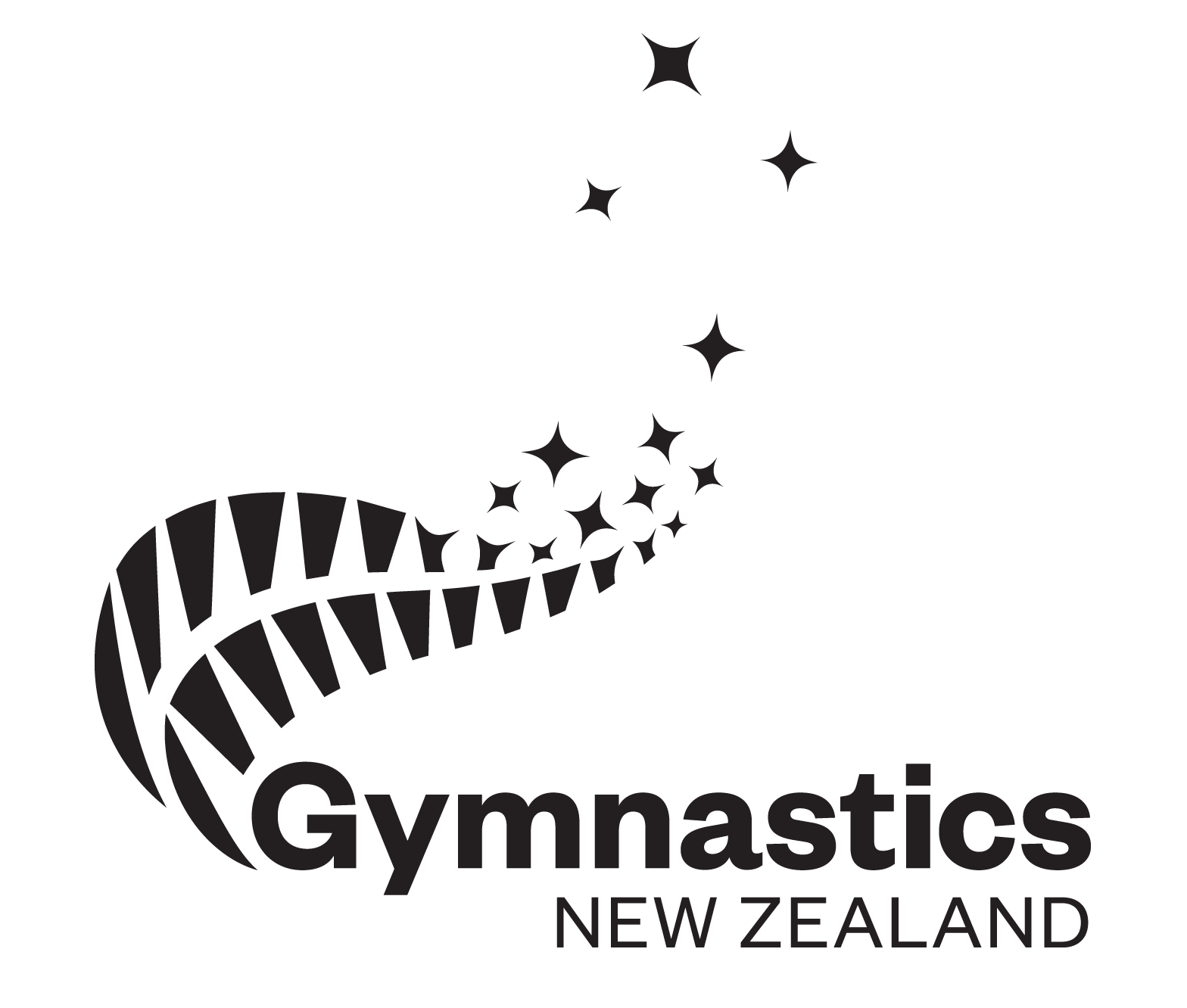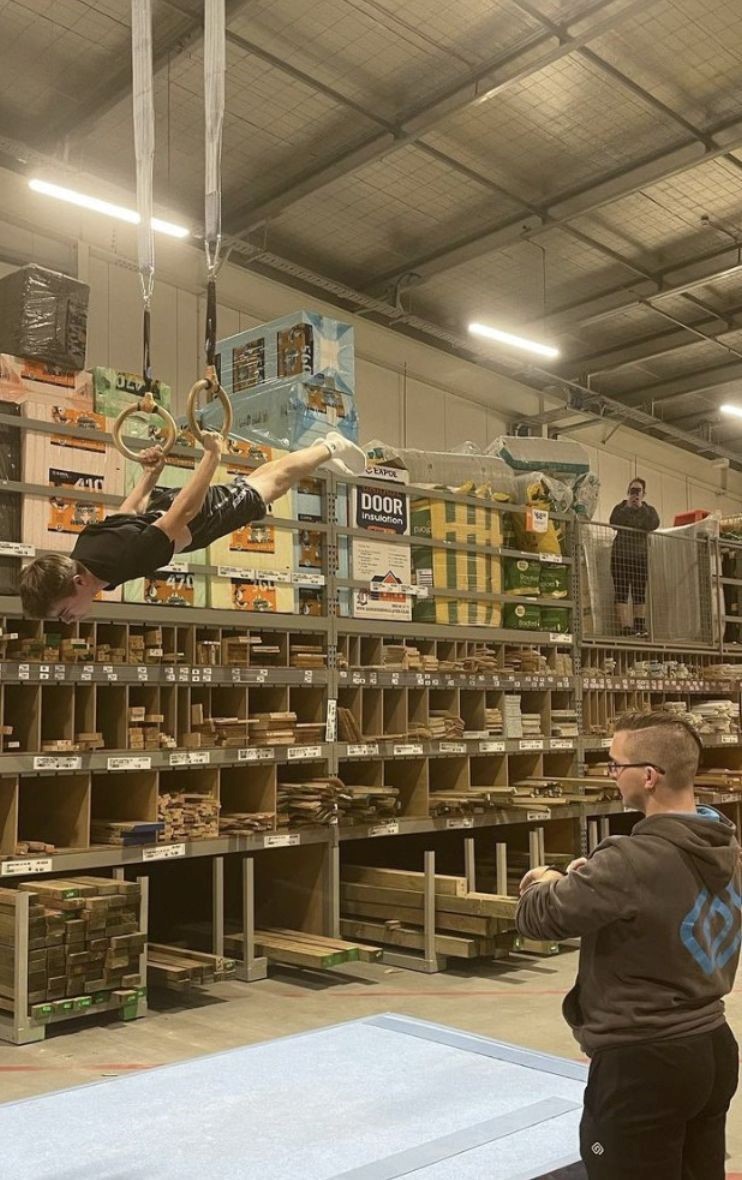
Gymnastics New Zealand is highlighting a range of clubs and the different approaches they’ve taken to promote the safety and wellbeing of gymnastics participants and those who deliver the sport. Our second feature club is Wanaka’s Aspiring Gymsports where “balance is better” principles are at the heart of their all their programmes.
For Wānaka’s Aspiring Gymsports, placing cooperation and community ahead of competition is both a necessity and an embodiment of its values.
With only a miniscule 200sq/m of floor area to work with at the club’s current premises, it has turned to the community to assist with some innovative solutions. The club’s rhythmic athletes train in a local primary school hall, the Olympic trampoline and 25m tumble track are set up at the Wānaka Recreation Centre – and the rings are in the local Mega Mitre 10.
“The boys go down there once a week and train rings which are hung from the rafters in the covered trade yard,” says Aspiring Gymsports Founder Rae Paterson.
The innovative solution means a Level 7 male gymnast who moved into the area from Auckland now has somewhere to practice the discipline – something that wasn’t initially possible.
“We are forming connections with loads of places outside of gymnastics,” says Paterson. “We look at our club as an asset for the whole community. Our club and culture have thrived because of our community, and because of our circumstances.”
Those circumstances include a snug main gym that means that multiple classes are typically held at the same time allowing for collaboration and knowledge transfer between coaches – and a thriving sports and recreation sector that provides a vast array of options for local families.
“Quite often we have two or three classes running at once and coaches are coaching together and sharing ideas together. We have coaches that aren’t offended if another coach offers an opinion.”
The club has always embraced the idea that gymnastics can be a foundation discipline for other sports and supports its gymnasts to be well-rounded. It found its culture aligned strongly with recommendations in the Shaping the Future of Gymnastics in Aotearoa report that was produced in response to the 2021 review.
“We see club members as coming into gymnastics for the long term,” says Paterson. “Short term results are great for the gymnasts to get some rewards, but that is not our focus. It is about teaching children how to enjoy their abilities, how to train, how to compete and how to be a teammate.”
“If you are a gymnast training so many hours that you can’t go to a birthday party, take a ballet class or participate in another sport, then that is where the problem comes. So, we very much stick to the Sport New Zealand Balance is Better approach.”
“It’s not for everyone and we do recognise that gymnasts at a higher level need to train more hours to help achieve their goals.”
Wānaka is the home of many of New Zealand’s elite snow sports athletes, many of whom have benefitted from a strong gymnastic foundation that was their introduction to the movements that would become the spectacular aerials that wow the judges in free skiing and snowboarding.
Emerging freeski star Luke Harrold was a successful gymnast at Aspiring long before he starred on the slopes of Colorado to take out the Aspen Open Freeski Halfpipe title earlier this year.
“When he went into snow sports, he was already Otago tumbling champion at that time,” says Paterson. “We’ve watched his progress with lots of interest and stayed in touch.”
International snow sports competitors Rocco Jamieson, Gustav Legnavsky, Finn and Campbell Melville-Ives and Ruby Andrews have all participated in pre-season, indoor training at Aspiring Gymsports with their coaches and trainers.
The club also provides strength and conditioning training for the local rowing club during winter and also assists the local police by having a club coach run an early morning youth programme.
“There are so many talented sports people in Wānaka,” says Paterson. “The children are so capable because they are given so many opportunities.”
Aspiring Gymsports has an infancy to adulthood pathway. Mini Muscles starts with babies as early as 10 weeks old, these classes help new parents to understand the crucial link between brain development and movement. This is followed by pre-school and 4 yr old classes, leading into recreational and competitive.
When they compete, Aspiring’s young gymnasts will often be up against competitors who train two to three times as many hours each week – and they do just fine.
The club has around 40-50 Regional and National competitive gymnasts, with another 200 or so purely recreational gymnasts.
“We don’t worry about what everyone else is doing,” says Paterson.
“We say just do what suits you, your club, and your family. That’s what it is all about. The families are the key to everything. Everyone needs to feel like they belong in their gymnastic home.”
Its relaxed approach hasn’t prevented Aspiring from producing winners.
The club’s top gymnast, Isabella Soper, won a national title at STEP 7 on the beam in 2019, and was runner up on the floor.
“She won every STEP in Otago when she competed,” says Paterson. “She got to the nationals at STEP 7 and won the beam. They were saying ‘what – she only trains six hours per week?’ Well, yeah. She does a lot of other stuff as well.
“Bella competed in STEP 8 and was recognised in vault and floor in the National Super Series post covid. She never had a gymnastic injury other than a rip. She’s also in the A Netball team, A Volleyball team, is an amazing dancer and coaches dance and gymnastics.
“A lot of coaches just don’t get what we do at all. But it is not impossible. We have done it in a tiny gym. People come into our gym and their jaws hit the floor. It is like ‘this is where you train’?”
Aspiring’s cosy confines, however, are soon to be a thing of the past. In July the club will move into a new 760sq/m facility. The massive increase in space will allow it to better cater for those wishing to pursue a high-performance pathway.
The club will need to bolster its coaching ranks – but any prospective new coaches will need to buy into the Aspiring way of doing things.
“It’s really hard finding coaches who we think will fit within our philosophy,” says Paterson.
“It’s about having a sense of pride and belonging in your club. What we do now suits us, our families, and our community. One size doesn’t fit all, and each club needs to find their own fit.
“We’ve really done amazing things in our tiny gym. It is going to be a new era. But we are going to take with us the culture that we have created.”

